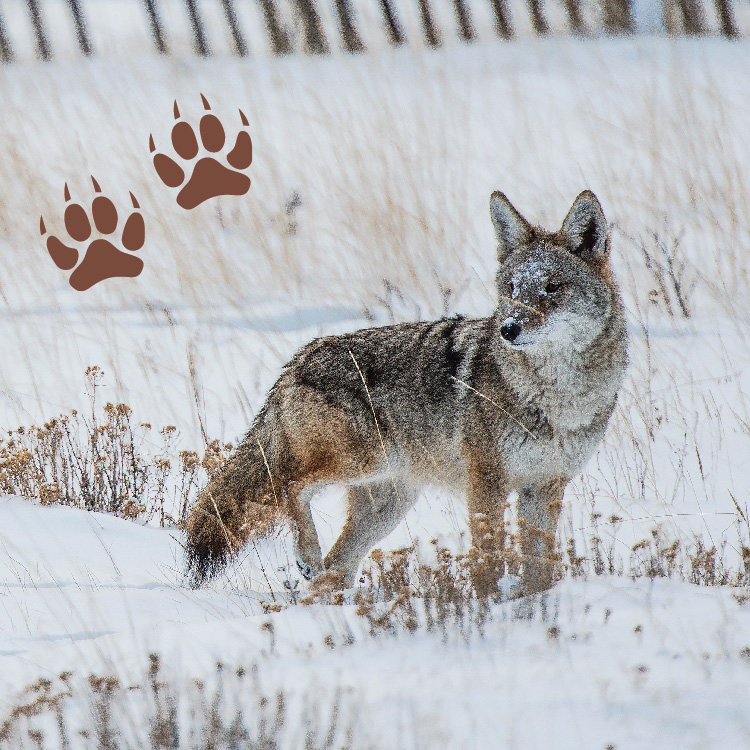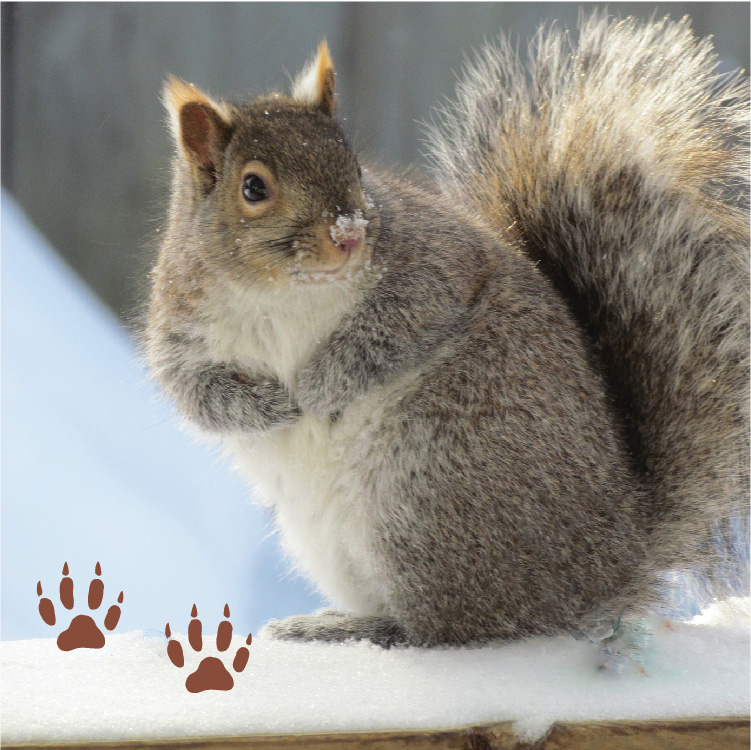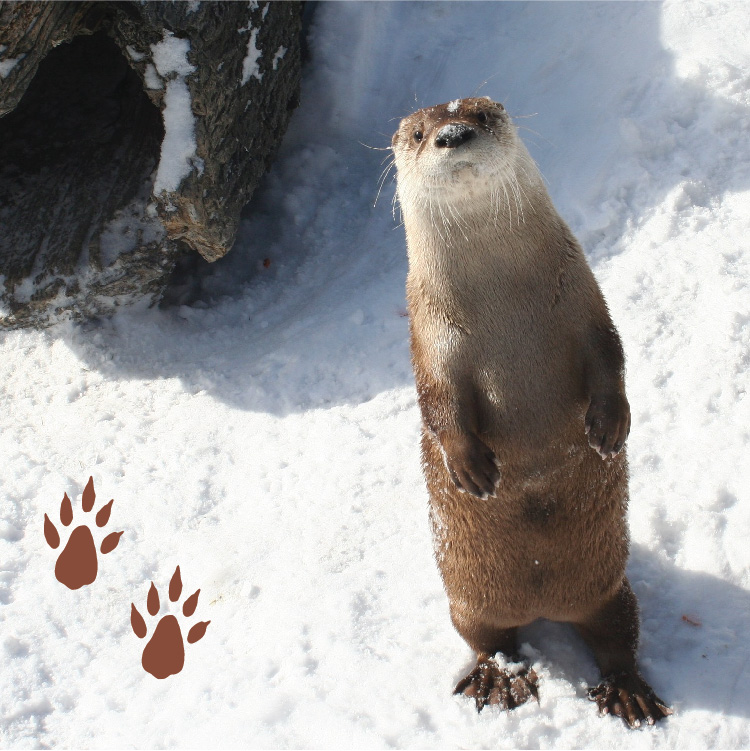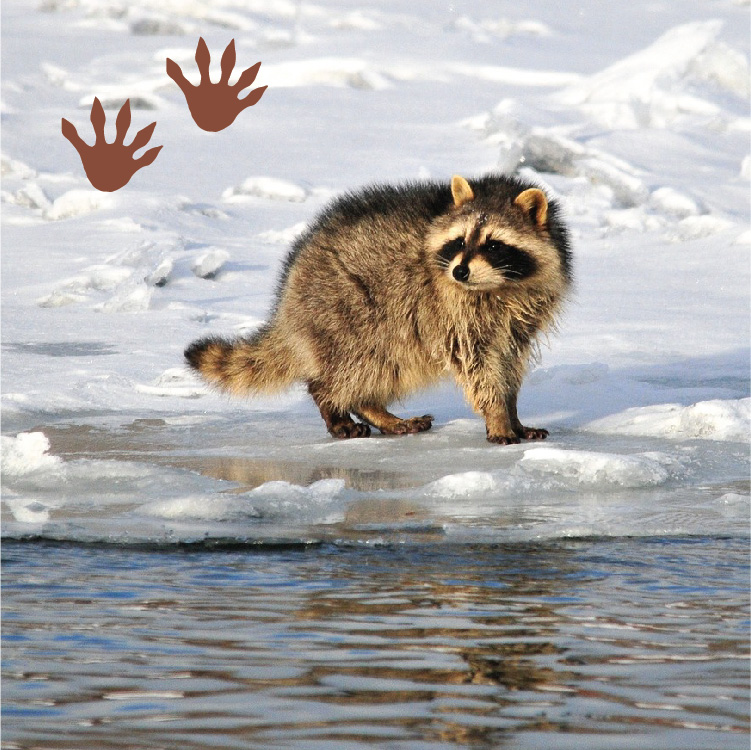
Freshly fallen snow covers the earth with a pristine white blanket, a silent backdrop for Mother Nature’s deep sleep. But wait . . . not every critter is sound asleep or hibernating. Some are still out and about hunting, foraging, getting water, scampering through the brush and leaving snowy tracks behind.
Just because it’s cold outside doesn’t mean you have to be stuck inside. That’s no fun. You can always dress warmly and scamper out of the house. It’s good for your health to go for nature walks. It’s good to breathe in fresh air and naturally absorb vitamin D from the sun in any season – but especially important to do so in winter when so many of us become deprived of optimal levels of this vitamin. As a frequent winter walker you can catch some D-rays and maybe prevent the winter blues, a lesser form of SAD (Seasonal Affective Disorder), from setting in and settling in come February.
And while you’re hiking out there in the wintry wonderland of a conservation area – usually a hop, skip and jump away from home – or observing the cool changes in your backyard, take some time to play detective and closely explore that newly fallen snow. Even if you never spot an actual animal, you can still figure out who crossed your path, who left that snowy pattern near your garden bed, and who dashed off into the woods.
Animal tracks in the snow give you clues to identify the winter walker who made those tracks – the number of toes on each foot, claw marks or no claw marks, the shape of the “pad” of the print, the total length and width of each print, how big the animal was, and amazingly, how the animal moves. Did it walk diagonally, waddle, bound or hop?

Diagonal Walkers
Deer, coyote, wolf, fox, cat, dog, hoofed animal, human
The animal lifts their opposite front and back legs at the same time (just like a baby crawls). This leaves a nearly straight or slightly zigzag line of single footprints. Humans walk on two legs but we swing our right arm forward as our left leg moves forward.

Hoppers
Squirrel, rabbit, hare, mouse, vole
These critters jump or hop off their hind feet so their front feet land first and their hind feet land second – but in front of their front feet! What you see is paired hind feet tracks in front of paired or slightly staggered front feet tracks.

Bounders
Weasel, mink, marten, fisher, river otter
These animals have long bodies and short legs but hop in a steady series of big jumps. Their hind legs land in the tracks of their front legs, or close to them.

Waddlers
Bear, porcupine, beaver, muskrat, raccoon, opossum, skunk
The animal lifts both feet on the same side at the same time, making it sway or waddle from side to side as it walks. Try walking by moving your right arm and right leg forward at the same time, then your left arm and left leg. Feels strange, doesn’t it?
This story was originally published in the Winter 2020 issue of Lake Simcoe Living Magazine.
